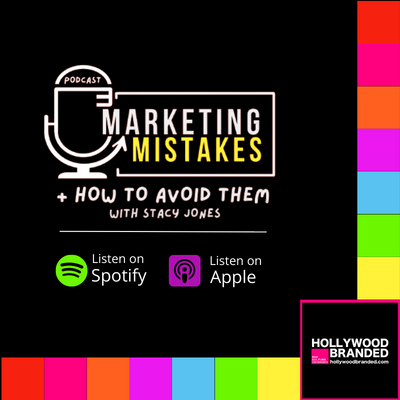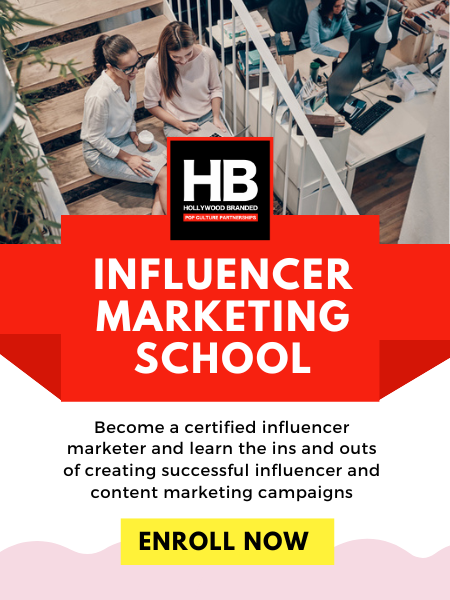Making Graphic Design More Accessible and Affordable with Jonathan Grzybowski
Table Of Contents
Designing A Graphic Design Company
Starting your own business is every entrepreneur's dream, but many of us often grapple with how to do it. Where do you start? What are your biggest strengths? Some of these things can only be learned over time. However if you chat with other entrepreneur's about their process, it might save you a lot of emotional and financial pain.
Recently, our CEO Stacy Jones, sat down the founder of an entirely remote graphic design agency to discuss how he built the company to scale. In this blog, Hollywood Branded takes a look at how Jonathan Gryzbowski made graphic design more accessible and affordable for his clients at Penji.

A Little More About Jonathan
Johnathan Grzybowski is the co-founder of Penji, a platform that gives you on demand access to the top 2% of graphic designers in the world. Their offering is that you can submit as many projects as you want to get your completed designs back in under 48 hours and only pay a flat monthly rate.
Interview Transcript Highlights
Question: How did you get to where you are today? What started you on this journey to launch a graphic design platform?
Answer: Yeah, I it's been a lot of failure for the most part that stumbled us into this particular domain. My entrepreneur career started at 15 and I only really had one real job. I worked for Apple for a number of years and kind of just bounced around when it comes to just ideas in general, but they all revolved around marketing or they all revolved around some type of graphic design element.
We're a digital marketing agency and we work with a lot of big companies like Inc 5000 companies, universities and things like that. We provided social media services and marketing and SEO, web design, but we were really bad at a large majority of those. So we are doing things and providing solutions for people that, in my personal opinion, just didn't make sense and it wasn't fulfilling at all.
So we would gain customers, lose customers and everybody would always compliment us about graphic design. So from there we were like, "Okay, we could be onto something." We started hiring. We found really good graphic designers and thought, "Well, why are we good at it and not a lot of other people are?" So we started serving a bunch of people and we asked them what are their pain points? And a lot of them was finding reliable graphic design talent, or at least talent in general. So then that's when we kind of knew we were on to something.
From there, we kind of just grew this service that we called graphic design. It ended up growing into something a lot bigger and we had our first customer pool from the surveys that we inevitably gave to our friends and family and network and stuff like that. That was about three and a half-ish years ago. We're now an Inc 5000 company and we have over a hundred employees. We're growing relatively rapidly month in, month out, which is something I'm incredibly proud of personally, especially during such troubling times that we're in now.

Question: When you had this realization that you had this agency that had so many different hats on and you wanted to dial it back to become a graphic design focused company and solution provider, how many employees did you have back then?
Answer: We started with four people, my two co-founders and one other individual. And we've just been growing ever since. We found something that I think the biggest takeaway from that experience growth, it wasn't necessarily a luck type of thing, although some of it had a lot to do with it. I would say more so we found a product and a service that legitimately helps people and then we just amplified that as much as we possibly can through creative storytelling.
So to those listening, I think now during the pandemic is the true tale of, is your business legitimately helping people? Because the people who are canceling don't see the value in what it is that you do. Now obviously they could be going through economic hardship, but our service is legitimately helping people, so even during a troubling time, we're still growing.
Question: How did you figure out the right way to bring 96 more people on board who were going to share in your company culture, who were going to be able to feel like they were part of your family?
Answer: We went through a couple of hiring sprees where it was just very rapid, but at the same time, we give tests for every single person that comes through. So it comes down to good systems and good processes, writing them out, making sure that they're clear, making sure that people understand them, testing to people in order to make sure that they're qualified versus who should we spend more time with, the people that pass or the people that fail.
More often than not if you give somebody a test and they pass it and you make that test nearly impossible in order for them to pass, then you know that they're, number one, they can take clear direction. They'll read, they'll listen, and they're actually good at their job. So I think that to us was probably the most important aspect was just really sound systems, processes.
The culture side, what we usually do and I think everybody should be doing, is asking the questions of how can we help you and what is your dream? And usually by asking those questions, it gives us an insight of the person's motivating factors. So does this person want to make a hundred thousand dollars a year, right? Then we need to be able to set them up for a plan in order to obtain that. Here's what you have to do. Here's how to do it. And here are the steps that you need to take in order to obtain that type of money. If they want to provide for their family, then we obviously understand where their emotional side comes in and we can play to that as well.
They're caring. Maybe they should be an account manager because they too care for others. Whatever the scenario is, we play to that, their strengths and weaknesses, and that's kind of how we built the culture from that. And also just legitimately caring, having conversations with people. We get on phone calls regularly with people, and we have active communications via Slack.
So from a leading leadership perspective, knowing people by name and knowing that this person has two children or loves basketball, you can kind of speak to that a little bit better than just saying, "Hey, how's your day going?" It's more direct and it's more personable and it's just, it's better. It's more human.

Question: What are some of the other tricks that you use to be able to expand to this point do you think, have enabled you to actually get to scale so rapidly?
Answer: I think from a internal perspective, I think it's more so the person that you're talking to. They have a job and a purpose and their purpose is to do X-Y-Z and they need to be aware of what that is and they also need to be aware of their KPIs.
So a key performance indicator is a measurement of success. If this person is able to obtain their and maintain their KPIs within our company, then they have opportunities to grow, et cetera, et cetera. The hardest aspect of that was setting the proper KPIs and then being able to actually tell the person what their job role is.
So for example, your job is to get five sales a week, right? How are you able to legitimately do that? And is the person that gave you the job, are they able to do it first? So we haven't created a job role. We haven't added new job roles unless the person that's providing that job role is able to actually accomplish that within a couple of weeks.
To us, that was incredibly insightful because we created the processes and systems in order to, we literally go, I specifically was the person that did the sales aspect of it and said, "Okay, this person is able..." I was able to get five, ten sales a week by doing these measures. And then being able to say, step one, step two, step three, step four. Then being able to deliver that and expect at least maybe not the same results, because you're the co-founder, but at least some moderation of that result.
That was probably the hardest part because in your head you can kind of write down the steps and then it makes sense to you, but then being able to give it to somebody else, it's like literally a different language. Having to kind of scale that and edit it was incredibly stressful, but that level of fine tooth comb allowed us to scale the way that we were able to. From a sales perspective, it's asking our customers where they came from and then doubling down on the trends. We have all of our numbers accounted for. When a customer comes through our system, we ask them how they found out about us. We also go a step further and say other additional questions essentially.
And if we start to see trends like five people coming from this particular Facebook group or 10 people coming from this particular keyword from advertisements or whatever, then we start to understand that we might be onto something. And then usually we invest a couple months time on that one particular topic and getting really good at that one thing.
So this year in particular has been about how can we further scale and obtain success and reach success within our advertisement budget? Because right now we're spending X amount of dollars, but we want to spend ten times more on that. And we need to be able to say that if we spend a hundred thousand, I'm just giving you a round number, a hundred thousand dollars a month on advertisements, what is going to be our return on our investment?
Question: Do you have a pretty fast hire smartly because you're giving people massive tests where they have to, as you said, follow detailed instructions to make it through. And then do you fire quickly?
Answer: I'm probably a little bit on the nicer side about that because I could say that from my perspective, I'm a little bit more emotional and I want to believe that everybody can achieve the tasks. I don't think, if I could do a self-analysis, I don't think that I'm as fast as I would want to be because I want to be fair, but I wish I was faster.
I would even say, as far as a lot of people don't put blame and ownership on themselves and they blame other outside factors. Like for instance - they're a good person or they're trying, or it's their fault. I've come to the realization that since I'm the one that set up the process, I'm the reason why it's not working. I'm the person that needs to reassess. The amount of times that I've edited a document of a KPI or a system or process board is painstakingly, blood dripping through the eyes. That's how often it's been done so, but as needed.
Check Out The Podcast!
Jonathan has a LOT of great information from his experience in entrepreneurship, check out the podcast below to learn more about how to start a business from the ground up!
Every week we have a marketing professional on our show to share their tips, tricks and lessons learned from their professional experience. Check out some of our other podcast blogs from earlier this year:
Every week we release a new podcast featuring guest's with so much knowledge about marketing, you don't want to miss one! How can you make sure you don't miss an episode? Click below to subscribe!








